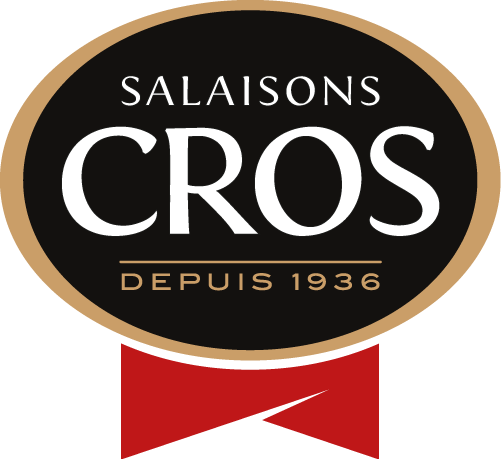Much More than just know-how
GREAT CARE IS TAKEN THROUGHOUT EVERY STEP OF THE MANUFACTURING
PROCESS TO OFFER ONLY THE BEST PRODUCTS.
Our manufacturing secret : quality meat, sea salt and… patience

HOW WE MAKE OUR CURED HAM
Our manufacturing secret lies in the importance of
choosing the right raw materials.

A fresh ham …
Farming : Good farming practices are necessary to guarantee only the best raw materials.
We only use hams from livestock that are fed and looked after according to our specific requirements, which ensure animal welfare.
Long-term supplier relationships : We only use legs of pork that come from the breeders and abattoirs we work with.
We establish long-term relationships through quality channels such as “Le porc français” (label for French pork).
Selecting hams : Our salters select the best legs of pork.
They guarantee product freshness and ensure that our specifications are met.

… sea salt …
The hams are salted with sea salt.
The salt content of each ham is limited to a specific amount.

… and patience
Resting : Our hams are rested at a low temperature to allow the ham to absorb the salt and desiccate.
Drying and Coating : Then comes several months of waiting. Any water evaporates and the salt is absorbed
throughout the ham. To prepare for a lengthy curing the hams are then coated.
Curing : After being coated the hams are placed in a curing room where they are left to mature in natural air to acquire their characteristic flavours. The ham will slowly develop its aromas and a tender texture.

Bone-in and slicing
Boning : The cured hams are boned manually by our specialised machine operators.
Slicing : Our modern, efficient slicing plant is equipped with fully-automatic high-speed slicers.
These machines can adapt to any type of fixed-weight slicing.
1 / A fresh ham,
Farming : Good farming practices are necessary to guarantee only the best raw materials.
We only use hams from livestock that are fed and looked after according to our specific requirements, which ensure animal welfare.
Long-term suppliers relationships : We only use legs of pork that come from the breeders and abattoirs we work with.
We establish long-term relationships through quality channels such as “Le porc français” (label for French pork).
Selecting hams : Our salters select the best legs of pork.
They guarantee product freshness and ensure that our specifications are met.
2 / … sea salt…
The hams are salted with sea salt.
The salt content of each ham is limited to a specific amount.
3 / … And patience
Resting : Our hams are rested at a low temperature to allow the ham to absorb the salt and desiccate.
Drying and Coating : Then comes several months of waiting. Any water evaporates and the salt is absorbed
throughout the ham. To prepare for a lengthy curing the hams are then coated.
Curing : After being coated the hams are placed in a curing room where they are left to mature in natural air to acquire their characteristic flavours. The ham will slowly develop its aromas and a tender texture.
4 / Bone-in and slicing
Boning : The cured hams are boned manually by our specialised machine operators.
Slicing : Our modern, efficient slicing plant is equipped with fully-automatic high-speed slicers.
These machines can adapt to any type of fixed-weight slicing.

HOW WE MAKE OUR CURED SAUCISSON
Selecting the meat: Our cured sausages and saucissons are made with
carefully selected lean meat from premium cuts such as the shoulder, leg, etc.
Our ‘low-fat’ range is made from sows’ legs.

Mincing
Once the meat and fat have been selected it is then minced. The mixture is then seasoned with salt, pepper and spices.
This sausage filling is called mêlée in French

Stuffing
Then comes the meticulous and skilful job of stuffing the sausage meat into natural casings, before hanging them onto wooden bars. The use of natural casings ensures a slow curing process in our meat dryers.

STEAMING AND DRYING
The sausages and saucissons are then slowly cured.
During this stage the sausages develop a natural bloom and the characteristic flavour of cured meat.

Mincing
Once the meat and fat have been selected it is then minced. The mixture is then seasoned with salt, pepper and spices.
This sausage filling is called mêlée in French

Stuffing
Then comes the meticulous and skilful job of stuffing the sausage meat into natural casings, before hanging them onto wooden bars.
The use of natural casings ensures a slow curing process in our meat dryers.

STEAMING AND DRYING
The sausages and saucissons are then slowly cured.
During this stage the sausages develop a natural bloom and the characteristic flavour of cured meat.
1 / Mincing
Once the meat and fat have been selected it is then minced. The mixture is then seasoned with salt, pepper and spices. This sausage filling is called mêlée in French
2 / Stuffing
Then comes the meticulous and skilful job of stuffing the sausage meat into natural casings, before hanging them onto wooden bars.
The use of natural casings ensures a slow curing process in our meat dryers.
3 / STEAMING AND DRYING
The sausages and saucissons are then slowly cured.
During this stage the sausages develop a natural bloom and the characteristic flavour of cured meat.
